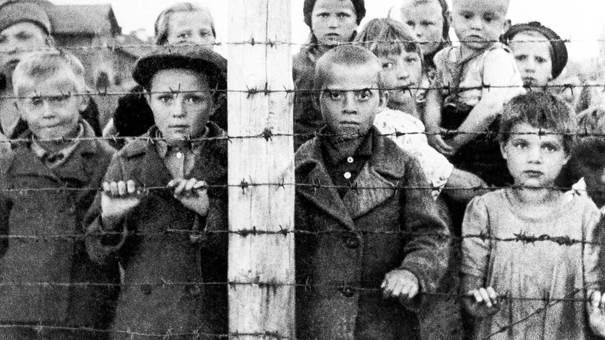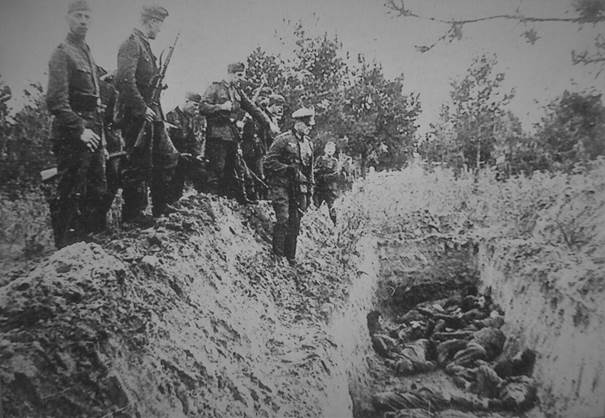ART AS PROPAGANDA IN THE SERVICE OF THE THIRD REICH. PHOTOGRAPHY
On April 7, 1938, the newspaper Das interessante Blatt published a photo report on Adolf Hitler’s visit to the Austrian city of Graz. The photographs were taken by Austrian photographer Lothar Rübelt. Gitrel visited Graz after the Anschluss of Austria on March 13, 1938, and this photo essay was clearly of a propaganda nature and was intended to demonstrate the absolute support of the Austrians for the annexation of Austria to Germany.
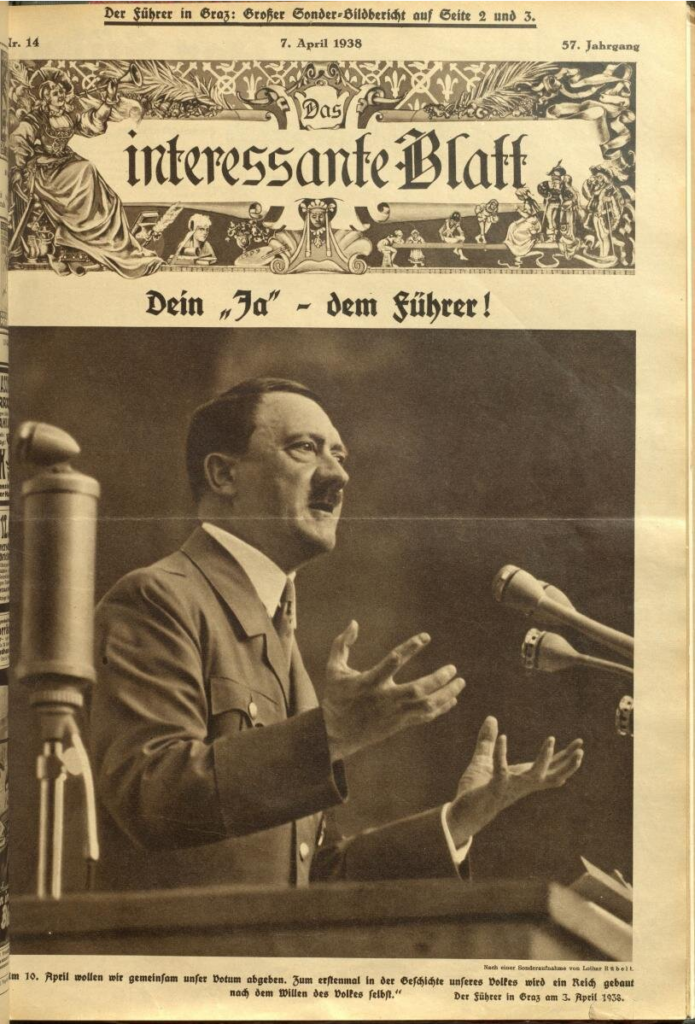
The photo report is made in the form of a collage and consists of 9 photos, 7 of which are numbered and have a description. We see Hitler at the railway station, where he passes in front of the guard of honor, we see the happy faces of the people greeting their Führer, we see Hitler’s speech to the people in the huge hall, where 20,000 people were present at the Fuehrer’s speech only inside and about 40,000 listened to the speech in the streets of Graz, we see Hitler surrounded by his comrades-in-arms, as well as a photo of the Nazi youth listening to the speech of their Führer. Everywhere there are flags with Nazi symbols, a banner with the inscription “Ein Volk, ein Reich, ein Führer” (“One people, one Reise, one Führer”) under the ceiling in the hall, the streets of the city are festively decorated. Everything testifies to the importance and solemnity of the event.
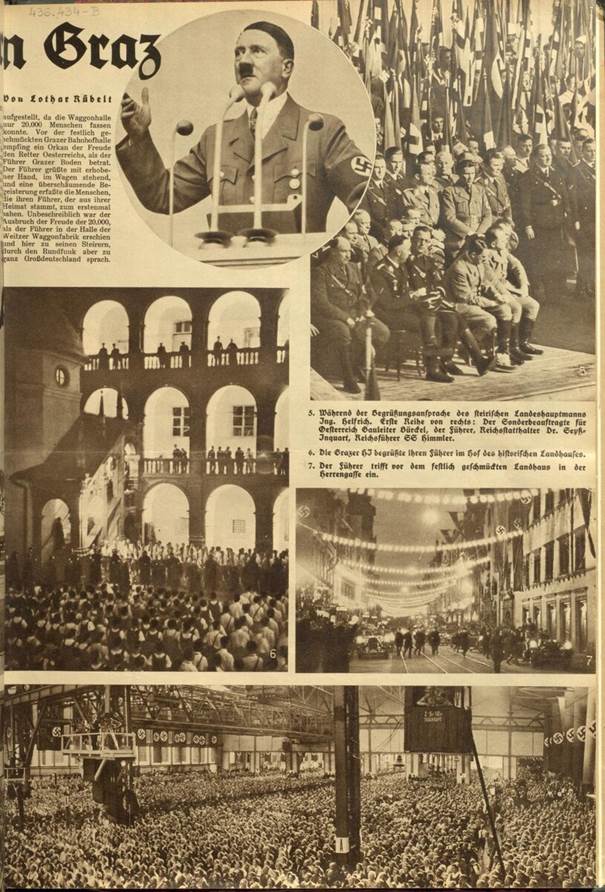
Of course, this report is not an impartial recording of events, which includes absolutely all the details. The author carefully selects the photographs and builds them in a logical chain. As Hitler advances through the city, more and more people get caught in the lens of the camera, turning in the last photo into a huge sea of people, looking at the Führer in unconditional support. There is no end to this sea of people.
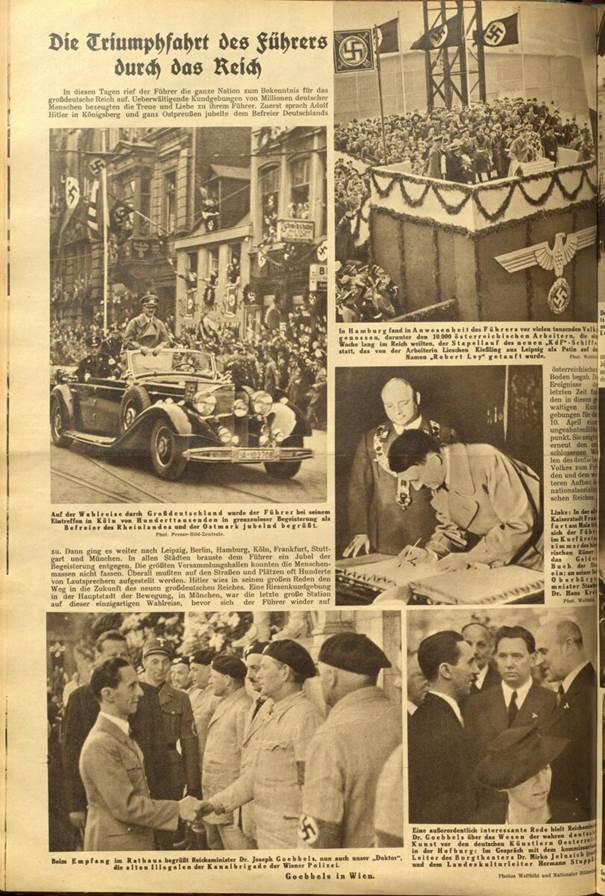
After the Nazis came to power in Germany, the Reich Ministry of Public Enlightenment and Propaganda (RMVP) was established under the leadership of Paul Joseph Goebbels, whose task was to control education, all media, book publishing, and all forms of art, including music, theater, film, and photography. As early as 1938, Colonel General Wilhelm Keitel issued a memorandum in which he bluntly stated that the future war would be fought not only on the battlefield, but also on propaganda, for which a separate body was created at the end of 1938 – the Propaganda Company (Propagandakompanie – PK). It was there that photographers worked, who not only created the “correct” images of the Third Reich, their task was also to demoralize the enemy and the population of the occupied territories. Photography was a cheap, accessible and fast way of propaganda. The aim of the photographers was to create a positive image of Nazi Germany not only in the moment, but also in historical perspective. As well as the correctly presented image of the Führer.
Selected and going through quite a long way before being published, the photographs later appeared on the pages of newspapers, magazines, on posters, leaflets, sold in the form of postcards and even photo albums. A special genre of Führerbild, that is, photographs of Adolf Hitler himself at various moments of his life, became popular.
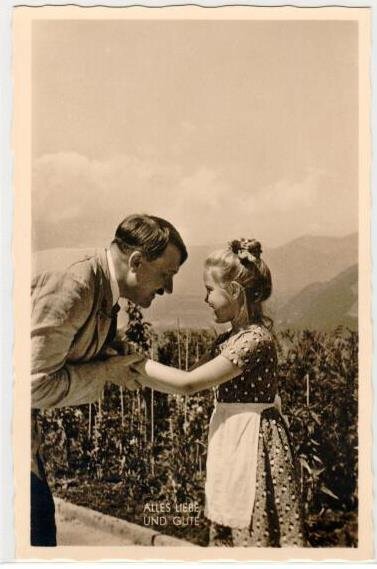
Heinrich Hoffmann. Hitler and Berneli Ninau
A special contribution to the creation of Hitler’s photo albums and portraits was made by Hitler’s personal photographer Heinrich Hoffmann. In 1932, Heinrich Hoffmann’s first album, Hitler wie ihn keiner kennt (Hitler wie ihn keiner kennt), was published, featuring 100 photographs of the Führer. But the album “Youth and Hitler” (Jugend um Hitler) was especially popular. It was there that pictures of a little girl, Berneli Ninau, who is known for her friendship with the dictator, appeared. Look at what a touching photograph it is: a pastoral landscape, mountains, vineyards, a wonderful laughing girl stretching out her hands to the Führer, and a kind uncle smiling and gently holding the girl’s hands. In the photo, the Führer is not in military uniform, he is wearing an ordinary jacket and a white shirt, which makes the photo even more neutral and closer to the people. If we don’t know who is in front of us, then a photo can even cause tenderness. It is hard to imagine that this same man would be responsible for the deaths of millions of similar children who would be mercilessly burned in the furnaces of concentration camps. Millions more will be orphaned and crippled. However, for ordinary Germans, all this remains behind the scenes.
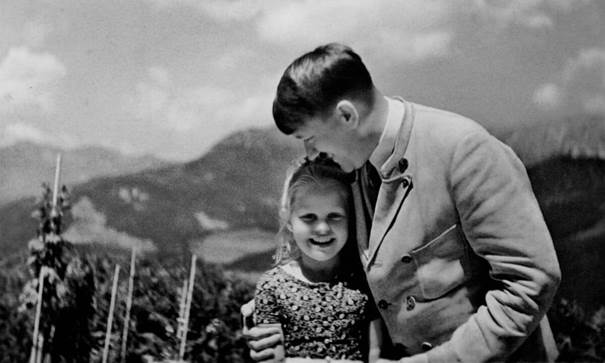
From the album “Hitler and the Youth”
Or here is another photo: Hitler in front of the model of Munich, which Hitler planned to radically rebuild.
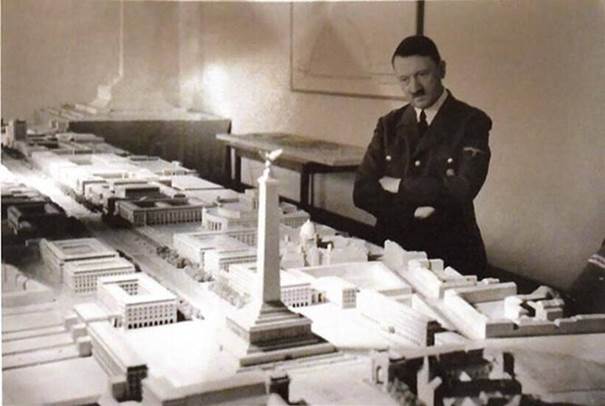
In the photo, Hitler looks thoughtfully at the future great city of Greater Germany. He looks down on the world, just like he looks down on the whole world. The photo is dated 1940, the war has already begun, a rapid offensive of German troops on all fronts and a shameful defeat are ahead. But for now, the Führer is confident. Against the background of the model of the city, the figure of Hitler seems huge – tiny houses made of papier-mâché and a big man who can destroy this city with one wave of his hand. Everything in this photograph is symbolic: the clean white buildings and the dark figure of the Führer looming over the city. In 5 years, European cities will lie in ruins, Adolf Hitler will be a destroyer, not a creator. The world he sought to conquer will remain just a mock-up.
Walter Albert Frentz, Untersturmführer of the Waffen-SS, from 1941 a lieutenant in the Luftwaffe, another comrade-in-arms and photographer of Hitler. Between 1933 and 1945, he took thousands of black-and-white and color photographs of Hitler, Eva Braun and his shepherd Blondie. In addition, he shot a lot of newsreel shots, he witnessed the occupation of Minsk, filmed the shelling of Sevastopol, at the beginning of 1945 in color photographed the destroyed German cities: Berlin, Dresden, Frankfurt am Main, Freiburg, Heilbronn, Cologne, Munich, Nuremberg, Paderborn, Ulm. At the end of March 1945, Franz took the last shots of Hitler, which today are among his most famous photographs: Hitler awarding child soldiers in the courtyard of the New Reich Chancellery.
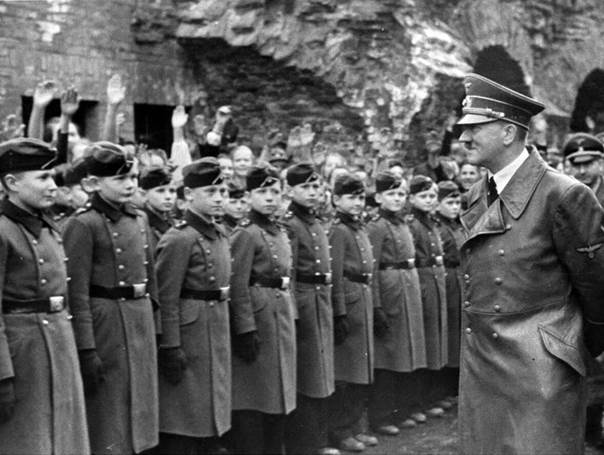
Hitler awards child soldiers in the courtyard of the New Reich Chancellery.
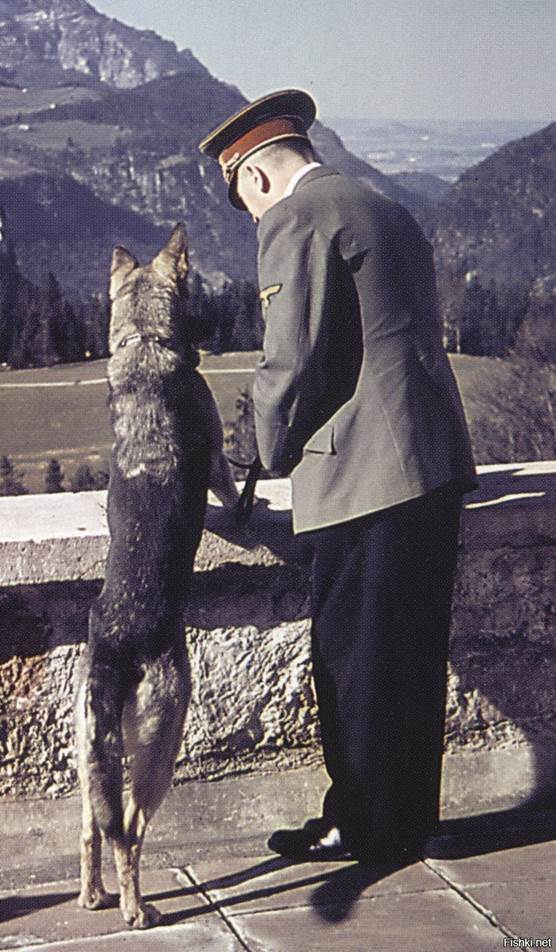
Hitler and Blondie
In this photo, Hitler is with his beloved shepherd dog Blondie. In the novel Shadows in Paradise, Remarque writes: “The Third Reich is famous for its love of animals. The Führer’s shepherd dog is named Blondie, and he cherishes her like a child.” Indeed, what we see in the photo is not a ruthless dictator who is responsible for millions of innocent victims, but a human being. If you don’t know who’s in front of you, the photo can even be touching.
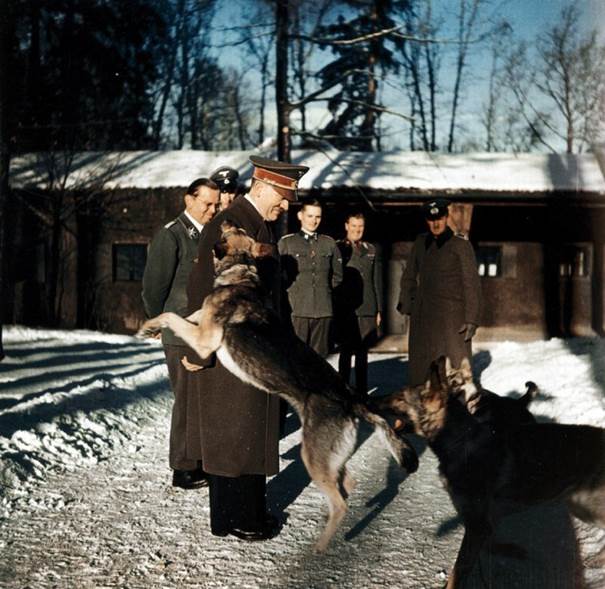
Hitler and Blondie
Another photographer who created many propaganda images of the Third Reich was Hugo Jäger, who was the first German propaganda photographer to turn to color photography. When Hitler saw his photographs, he was shocked and said, “The future belongs to color photography.” Hugo Jäger has created a huge collection of photographs not only of famous party leaders of the Third Reich, but also of chronicles of events, including the Anschluss of Austria, up to 1944. After the war, he folded 2,000 slides into 12 metal boxes and carefully hid them in various locations in the suburbs of Munich before selling them to Life magazine in 1965.
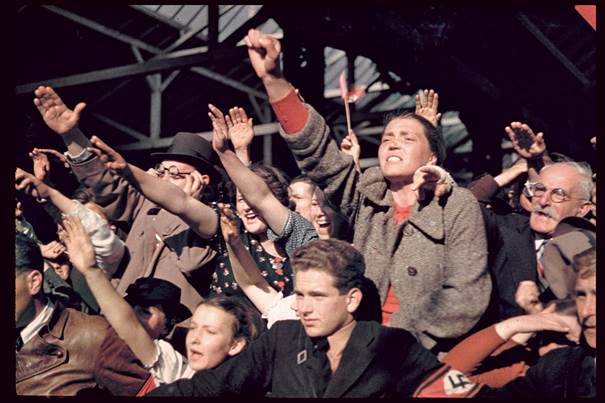
Happy Austrians greet Adolf Hitler during Anschluss campaign
A huge number of propagandist photographers worked in the service of the Third Reich. The Second World War has become the most photographically documented. However, the world knows other photographs taken by Soviet and foreign photographers who documented the terrible crimes of the Nazis. Many of these photographs are so horrific and inhumane that even a cursory glance at them is horrifying. But from time to time, you have to look at them so that you don’t forget what the Nazis did during World War II.
